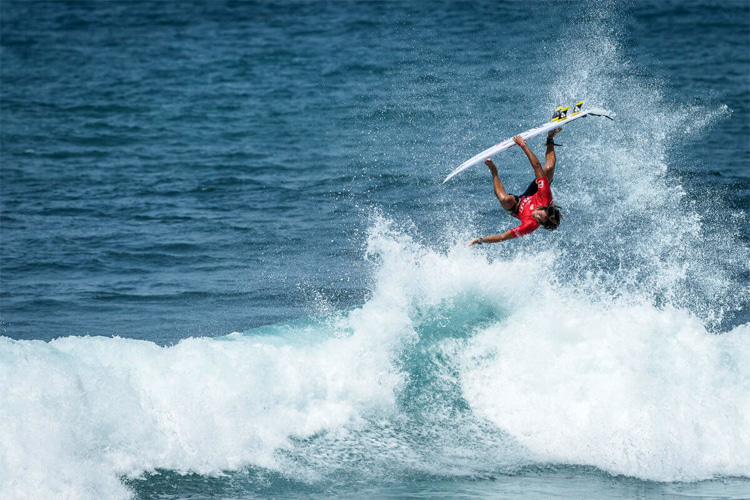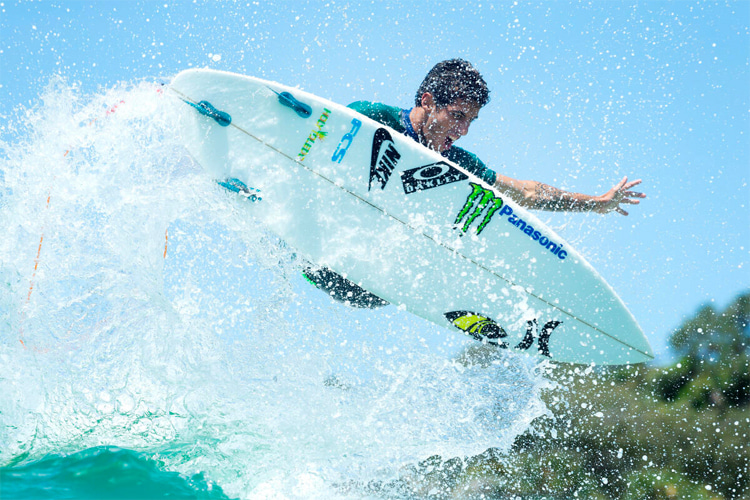The first-ever expression session movement hit surfing in the 1970s when wave riders discovered there was more to wave-riding than wearing a jersey.
If there's one sport where competitiveness doesn't necessarily mean high performance, it's surfing.
The sport of kings is well-known for its artistic and soulful essence.
Pro surfers sometimes need to pause their careers and enjoy the pleasure of lonely searches and explorations of uncharted waves.
It's part of the thrill of being a surfer.
Whether they're part or full-time soul surfers, followers of the surfing religion, purists, or professional (free) surfers, there's always time for introspection.
After all, Nature makes the call; the surfer has to listen, process the message, and act according to his instinct.
But first, what exactly is an expression session? Why did wave riders feel the need to design an event that is a contest but not quite a competition?
Interestingly, the concept of an expression session is older than one might think.
"The surfing showcase event without judges, scores, winners, or losers, was first held in 1970, 1971, and 1973, primarily on the North Shore of Oahu, featuring a select group of the world's best surfers," notes Matt Warshaw, author of "The Encyclopedia of Surfing."
"The expression session was presented as a soulful 'anti contest' alternative to the standard surf meet."
Surf journalist and author Drew Kampion was one of the first to suggest "a new system between the individual and himself, to do the thing he does best as well as he can."
In other words, quite paradoxically, it's a contest that doesn't put a surfer against a surfer. But it still is a competition.

Expression Sessions: The Inaugural 1970, 1971, and 1973 Editions
The truth is that the idea turned out to be appealing and doable.
"Duke Boyd, the owner of California-based Golden Breed beachwear company, along with pro surfer Jeff Hakman and surf magazine publisher Dick Graham, brought Kampion's idea to life with the Golden Breed Expression Session," adds Warshaw.
The world's first surfing expression session featured 24 male athletes - women were excluded from all three sessions.
The invitational-like bout included a $200 appearance fee and was supposed to give complete control over when and where to stage the event.
However, the inaugural expression session did not start well.
An angry group of non-invitees crashed the opening "Good Karma Party at Hakman's beachfront house and brawled with the official participants.
Then, the waves were far from perfect at Rocky Point.
The first round of the 1970 event was made of four sessions, each featuring six surfers.
A second round was held in slightly better surf the following week at Rainbows in Maui, with nine participants deciding not to fly over from Oahu.
David Nuuhiwa, Jock Sutherland, and Nat Young were the standouts of surfing's inaugural expression session.
Greg MacGillivray and Jim Freeman shot the 1970s event and included a few waves in their 1971 surf movie "Five Summer Stories."
The second-ever expression session was way better than its predecessor.
The first waves were ridden in stunning 10-foot surf at Pipeline, and the second round was held at Sunset Beach.
Gerry Lopez, Jeff Hakman, Owl Chapman, and Sam Hawk stood out.
The event was featured in "Oceans" (1972) and "Super Session" (1975).
Finally, the third edition ran in 1973 but was not covered at all by surf media. It was held at Off the Wall/Backdoor, Haleiwa, and Pipeline.
According to an entrant, "some surfers got lost along the way," so it was definitely not a memorable session.
Do You Need Drama? Maybe Yes
The expression session format was redesigned and brought back to life in the 1980s and 1990s as professional surfing grew and went mainstream.
In 1988, the Quiksilver in Memory of Eddie Aikau was not getting enough big waves.
As a result, contest director George Downing quickly organized a three-hour, no-prize-money expression session to entertain everyone.
During the ASP World Tour days, contest organizers filled the time between the semifinal and final heats with short free surfing matchups.
These laid-back show-off time slots featured six or more already-eliminated surfers doing their best to impress the crowd.
Expression sessions evolved into windows of modern surfing, where athletes could unleash all their creativity and take risks they wouldn't usually take in standard competitive formats.
The audience - offline and later online - loved it.
Gerry Lopez once wrote, "In its very essence, all that a surfer could dream of - an art show rather than a competition."
Expression sessions soon became extremely popular and regarded as the antechamber of future surfing-
Throughout the 1990s and 2000s, these specialty events adopted different formats and included prize money and past legends of the sport.
Some of the world's best free surfers caught the audience's attention for the first time during these adrenaline-fueled trick showdowns.
And with the advent of aerial surfing, standalone, expression session-influenced competitions were held to promote the sport's striking displays of power and air skills.
Critics of expression sessions say fans and surfers want winners and losers, athletes at stake, pressure, politics, results, points, trophies, controversy, prize money, and a reason to come back in the future.
